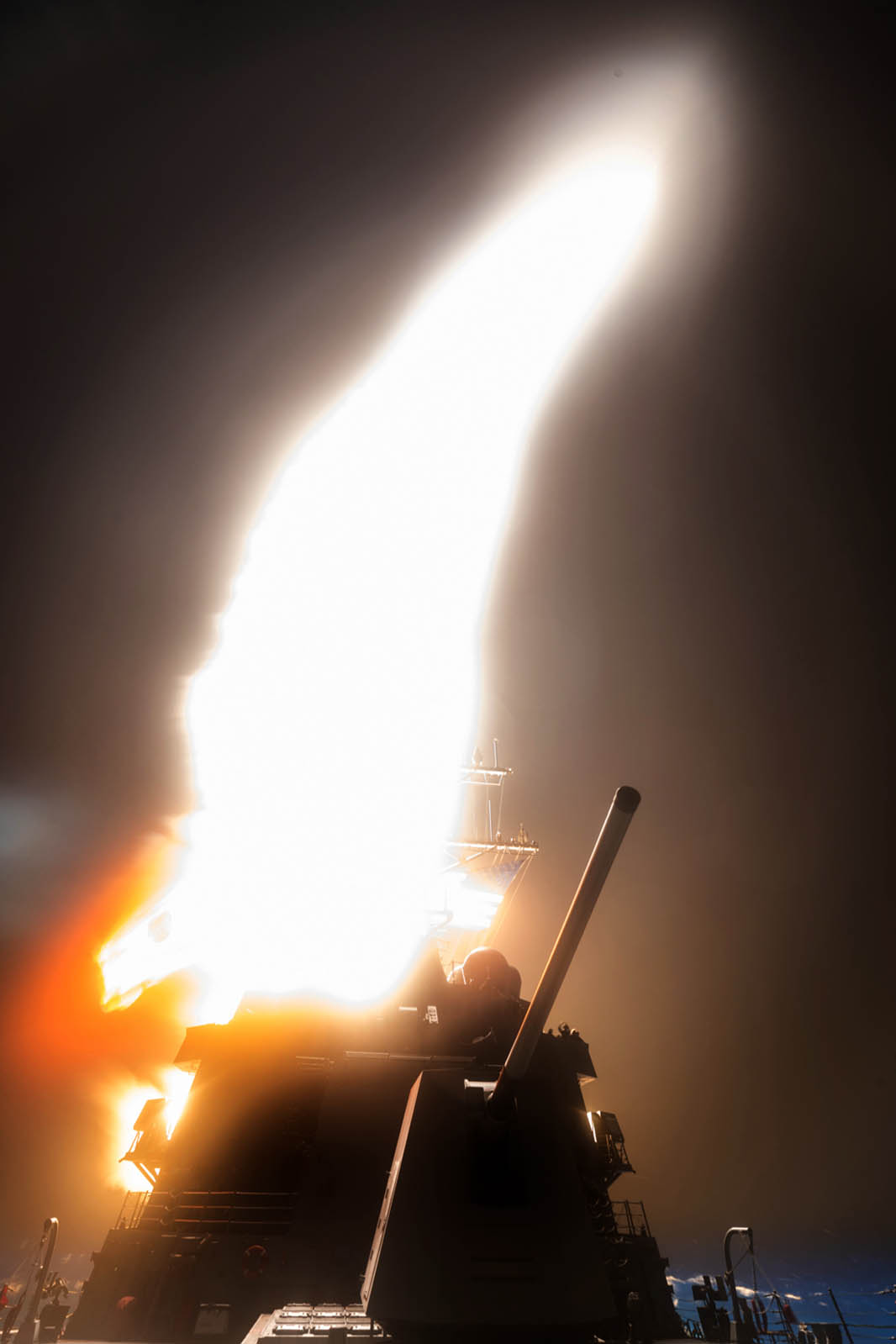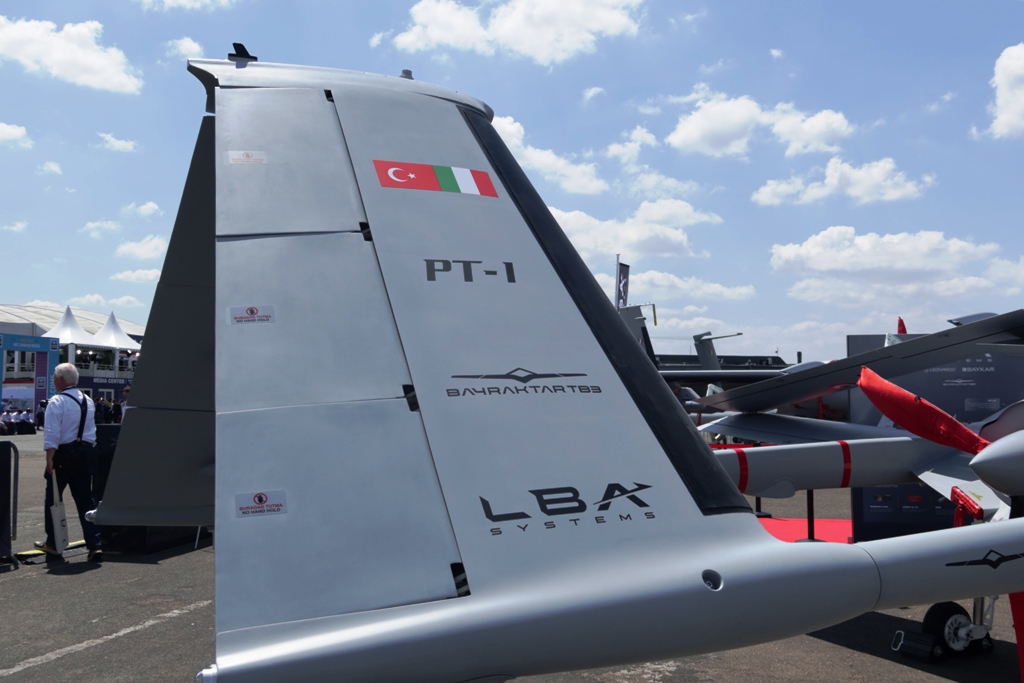The growing threat posed by hypersonic weapons triggers multiple nations to pursue development of hypersonic missile interceptors.
China and Russia have fielded hypersonic cruise missiles (HCMs) as well as hypersonic glide vehicles (HGVs); most recently, North Korea announced the development of an HGV. HCMs have air-breathing propulsion and generally operate akin to conventional cruise missiles, albeit at hypersonic speeds (>Mach 5) thanks to the employment of scramjet propulsion systems.
HGVs are launched atop rocket boosters which propel them to hypersonic speeds before the stage housing the glide vehicle performs a dive manoeuvre, at which point the glide vehicle separates from the stage, often at high endoatmospheric altitudes or (depending on range) at very low exoatmospheric altitudes and continues the dive. Once at the appropriate altitude, the HGV then performs a pull-up manoeuvre to orient themselves and begin their endoatmospheric glide phase, using atmospheric lift to sustain their glide and to manoeuvre. Their combination of speed and manoeuvrability makes hypersonic weapons difficult to intercept, and Western nations have recently intensified their efforts to develop countermeasures to this threat.
United States
Despite the reported success of PATRIOT PAC-3 MSE against the likes of Russia’s Zircon HCM on 25 March 2024, military planners agree that the increasing sophistication of hypersonic weapons requires intercept systems specifically optimised to combat this threat. The United States armed forces are pursuing several programmes.
THAAD 6.0
The Theater High Altitude Air Defense (THAAD) system is currently designed for exo- and endoatmospheric intercept of short- and medium-range ballistic missiles (SRBMs and MRBMs), along with a limited capability against intermediate-range ballistic missiles (IRBMs). THAAD’s MIM-401 Talon interceptor missile is capable of engaging targets at ranges of around 200 km distance from the THAAD launcher and at altitudes between 40 km and 150 km. In its current configuration, THAAD is ill-suited for HCM/HGV interceptions. While the interceptor achieves Mach 8 flight speed, it operates at too great an altitude to effectively combat HCMs and HGVs; in the former case, because HCMs typically fly at altitudes well below 40 km, while in the latter case, if THAAD is located relatively near the HGV’s target, the HGV would be expected to be flying at below 40 km by the time it is in range of THAAD.
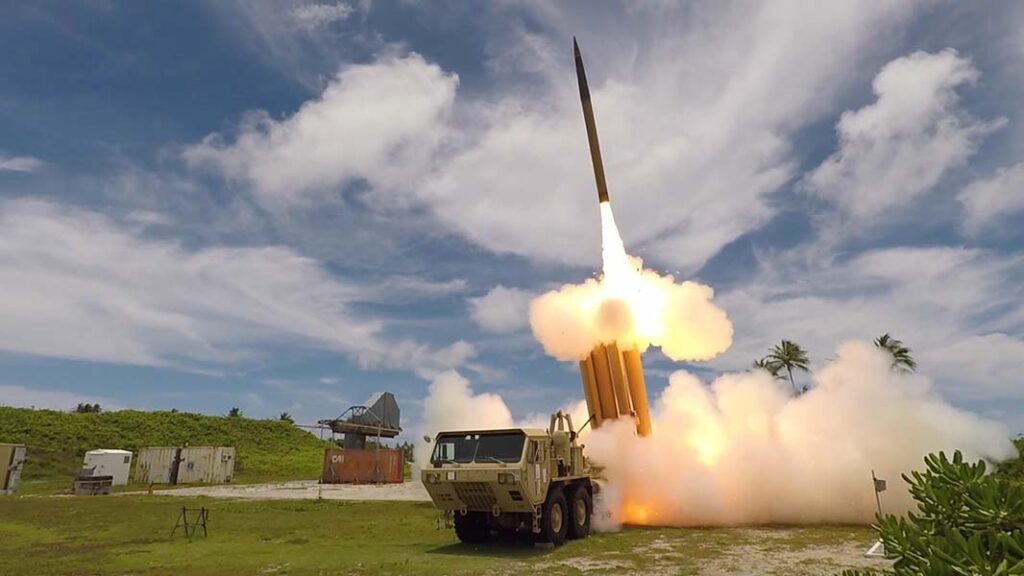
The Pentagon’s Missile Defense Agency (MDA) has been incrementally upgrading THAAD’s capabilities. The THAAD 4.0 software upgrade currently being fielded permits networking the THAAD and PAC-3 MSE systems. This enables sharing sensor data from the THAAD’s AN/TPY-2 X-band radar, which could enhance PATRIOT’s targeting of hypersonic weapons. The THAAD Build 5.0 mid-term upgrade is scheduled to be operational in July 2026, and encompasses both software and hardware elements. Details largely remain classified, but the upgrade is expected to involve improved guidance algorithms, processing speed, and seeker software. This may incrementally improve odds of intercepting some types of target, but THAAD 5.0 will still deploy the legacy Talon missile with its previously described limitations.
In this context, the MDA is upgrading the AN/TPY-2 radar employed with the THAAD system. In May 2025, Raytheon delivered the first AN/TPY-2 outfitted with a Gallium Nitride (GaN) antenna array and advanced CX6 high-performance computing software. This is the first unit of the AN/TPY-2 expressly capable of acquiring and tracking hypersonic vehicles. According to RTX, the improved radar acquires targets at twice the range of the previous generation, and with improved target discrimination, enabling tracking of smaller and faster targets. Specifically, Raytheon reports that it can detect and track objects such as a separated HGV at long ranges and immediately after booster separation. Through future network integration of THAAD with PATRIOT and other intercept systems, the AN/TPY-2 GaN array promises incremental enhancement of US counter-hypersonic capabilities.
MDA is also thinking further ahead. In February 2025, the agency awarded Lockheed Martin a contract to develop the next-generation THAAD 6.0. Although concrete details are scarce, the MDA’s ‘Fiscal Year (FY) 2025 Budget Estimates’ document said the THAAD 6.0 upgrade aimed to update “THAAD with Increased Threat Space including THAAD Interceptor capability upgrades to improve performance against existing and emerging threats”. Furthermore, according to MDA Director Lieutenant General Heath A. Collins, speaking before the Senate Armed Services Committee Strategic Forces Subcommittee on 8 May 2024, “THAAD System Build 6.0 operational availability has been expedited to 2027 from 2032 and will provide initial capability against maneuvering threats and increase the threat engagement space. TH 6.0 includes capability enhancements to the THAAD interceptor, increased integration with Patriot MSE, and improvements to the cybersecurity risk posture and program protection.”
The following year, on 13 May 2025, speaking before the Senate Armed Services Committee Strategic Forces Subcommittee, Collins added that THAAD 6.0 “provides initial capability against non-ballistic threats”. Taken together, the aforementioned official statements strongly suggest that THAAD 6.0 will be aimed at providing some level of capability against threats such as HGVs – especially taken in conjunction with the When taken in conjunction with the aforementioned upgrade to the AN/TPY radar. The technical approach taken by THAAD 6.0 has not been officially revealed, but the upgrade is expected to include modifications to the interceptor’s propulsion system and the kill vehicle (KV).
Sea-Based Terminal (SBT)
The Sea-Based Terminal (SBT) system is an incremental, near-term capability currently fielded on selected Aegis-equipped ships as well as with Aegis Ashore. It utilises the Aegis Baseline 9 fire control system (in the Baseline 9.C2.0+ upgrade) and the SM-6 missile to defeat terminal-phase threats, understood based on tests to some level of capability against manoeuvring hypersonic targets such as HGVs. SBT expands the previous Aegis capabilities by adding SM-6 salvo engagement against threats entering their terminal phase.
To date, MDA and Lockheed Martin have successfully developed the first two increments of SBT, which utilised SM-6 Dual I (Block I) and Dual II (Block IA) configuration missiles and are gauged toward endoatmospheric interception of ballistic missiles. SBT Increment 3 utilises the SM-6 Block IA upgrade or IAU (integrated avionics upgrade) missile equipped with improved guidance section electronics, which are expected to enhance the missile’s capability against manoeuvring hypersonic threats in the terminal phase.
On 24 March 2025, the MDA and US Navy conducted Flight Test Other 40 (FTX-40) which involved an interception of a simulated hypersonic threat – in this case using an MRBM mounting an HTV-1 (hypersonic test vehicle), understood to be a form of HGV. The test involved the Arleigh Burke class destroyer USS Pinckney (DDG 91) which used the SBT Increment 3 capability to acquire and track the target and simulate firing the SM-6 IAU onto an intercept course.

FTX-40 prepares the stage for the next, more ambitious test of the SBT’s hypersonic intercept capability. That planned test will be designated Flight Test Aegis Weapon System-43 (FTM-43), and will constitute a live intercept of the MRBM HTV-1 target using the SM-6 IAU. FTM-43 will determine whether the seeker upgrades and new flight-control algorithms enable the interceptor to outmanoeuvre the HTV-1. Overall, “the Aegis Weapon System will play a vital role in the next-generation integrated air and missile defense system (…) as we continue to partner with the Navy in advancing our Nation’s counter-hypersonic capabilities,” according to MDA Director Collins following FTX-40.
Glide Phase Interceptor
The prominent role of Aegis (both at sea and ashore) for the hypersonic defence mission is not limited to the SBT. The Glide Phase Interceptor (GPI) is a separate development effort to field a new, higher-energy interceptor capable of engaging HGVs earlier, while they’re still in the very high atmosphere. In principle, it is intended to bridge the gap between the exoatmospheric SM-3 and the endoatmospheric SM-6.
It will launch from Mk-41 VLS cells on Aegis ships and Aegis Ashore facilities, but will carry a purpose-built KV and seeker optimised for the long, flat glide trajectories of HGVs. The US and Japan signed a co-development agreement for GPI in May 2024, and selected Northrop Grumman’s design proposal in September 2024. This design will include a sophisticated seeker design, with the manufacturer’s phrasing suggesting a probable dual-mode (infrared and radar) seeker, along with a re-ignitable upper stage engine for threat containment and dual engagement modes to handle threats across a wide range of altitudes.
The current programme timeline calls for achieving IOC by the end of FY 2029, with a minimum of 12 interceptors delivered by that date. Full operational capability (FOC) is required by the end of 2032, including integration with space-based or terrestrial sensors for collaborative engagements. Inventory must consist of at least 24 interceptors by 2040.
Overall, the Aegis system promises to provide a comprehensive and layered engagement capability against HGVs, with the GPI making the first attempt at exoatmospheric levels, while the SBT provides a backup endoatmospheric capability.
Glide Breaker (DARPA)
The Defense Advanced Research Projects Agency (DARPA) initiated the Glide Breaker programme in 2018 to develop and demonstrate “a propulsion technology to support a lightweight vehicle designed for hit-to-kill engagement of hypersonic threats at very long range”. Development of a next-generation divert and attitude control system (DACS) capable of executing very tight turns to outperform the manoeuvres of the target will be a central aspect of this programme.
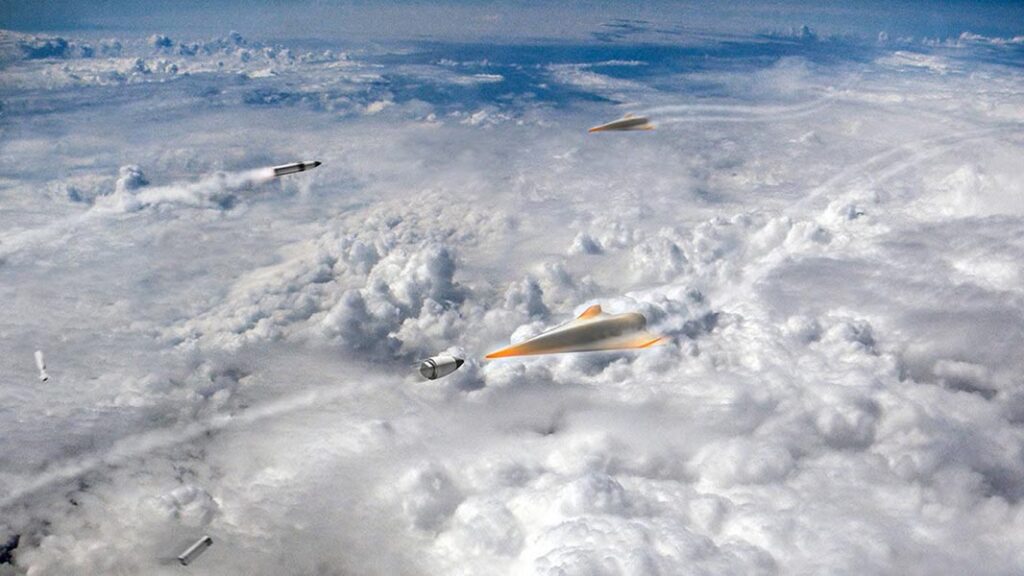
Phase 1 of the Glide Breaker programme focused on development of a control system to enable interception of hypersonic targets. Phase 2 will “develop the technical understanding of jet interactions necessary to enable the design of propulsion control systems for a future operational glide-phase interceptor kill vehicle,” said DARPA programme manager Major Nathan Greiner in 2023.
In September 2023, the agency selected Boeing for the Phase 2 contract, which will be fulfilled through early 2027. Boeing will conduct wind tunnel and flight tests to evaluate real-world jet-interaction dynamics and refine DACS-aerodynamics integration. “If successful, the results of Phase 2 will provide the foundation for a future programme of record interceptor,” the DARPA solicitation for Phase 2 said. Results are expected to flow into the GPI development programme.
Europe
Several multinational European initiatives to develop hypersonic interceptor technology in support of a layered, interoperable European missile defence architecture are also underway.
TWISTER
In November 2019, the EU’s Permanent Structured Cooperation (PESCO) defence initiative launched the Timely Warning and Interception with Space-based Theater surveillance (TWISTER) programme. The official purpose of TWISTER is to “(strengthen) the ability of Europeans to better detect, track and counter hypervelocity threats, in close cooperation with NATO, through a combination of enhanced capabilities for space-based early warning and endoatmospheric interceptors”.

A comparatively broad-based endeavour, the programme addresses a variety of threats including ballistic missiles up to 3,500 km range (including manoeuvring targets such as quasi-ballistic missiles and re-entry vehicles), HGVs, high-altitude supersonic cruise missiles, HCMs, and other manoeuvring air breathing targets (ABT). The three ‘legs’ of the programme are expansion of space surveillance capabilities to detect HGVs and HCMs in early flight, data fusion across domains to ensure coordinated tracking and engagement among allies, and development of a multi-role interceptor compatible with both ballistic and hypersonic threats.
Two parallel and competing multinational programmes are currently underway to develop the interceptor portion of a future European counter-hypersonic architecture to be fielded circa 2035. Both are coordinated by the Organisation Conjointe de Coopération en matière d’Armement (OCCAR), a multinational organisation that facilitates collaborative defence procurement and development programmes among European nations.
HYDEF
The European Defence Fund (EDF) 2021 call for proposals included a tender for “protection against high-velocity aerial threats”. Two proposals were presented: the Hypersonic Defence (HYDEF) concept by a Spanish-German-led consortium (Sener Aeroespacial and Diehl Defence), and the Hypersonic Defence Interceptor Study (HYDIS) consortium led by MBDA France. In July 2022, the European Commission awarded the project to the HYDEF consortium. OCCAR signed the HYDEF contract with Sistemas de Misiles de España as overall project coordinator on 31 October 2023. Additional industry partners from seven nations are participating, including Diehl Defence as technical coordinator.
The project has a run-time of 36 months and constitutes the concept phase for the endoatmospheric interceptor. As defined by OCCAR, “the project will result in the concept, risk mitigation and demonstration of a cost-effective endo-atmospheric interceptor able to operate in different air levels encompassing new aerodynamic and actuator system for high manoeuvrability, highly agile guidance concepts, and advanced sensor/seeker systems.”
The programme met its third technical milestone at the Early Maturation Kick-Off (EM KO) meeting in October 2024. The meeting involved assessing the current technological readiness level (TRL) of these technologies and identifying the resources required to advance their TRLs. All planned activities for the early design and technology maturation phase were reviewed and declared ready to begin. The expected development challenges, as outlined in the Technology Plan, were also addressed. Following the EM KO event the programme formally entered the technology maturation phase, with a focus on defining the system concept. The Concept Selection Milestone (CSM) is planned for August 2025, followed by the Early Maturation Mid-Term Review Milestone (EM MTR) in October 2025.
HYDIS
For its part, MBDA France revised its proposal and resubmitted it in response to the EDF March 2023 call for tenders for a concept architecture and technology maturation study of an endoatmospheric interceptor against new high end emerging threats. In July 2023, the European Commission accepted the tender for what was now designated the HYDIS2 project. OCCAR describes it as “the wider European collaborative response to the pressing need for a new interception solution able to effectively protect European territory, population, high-value assets and deployed forces in the years ahead”.
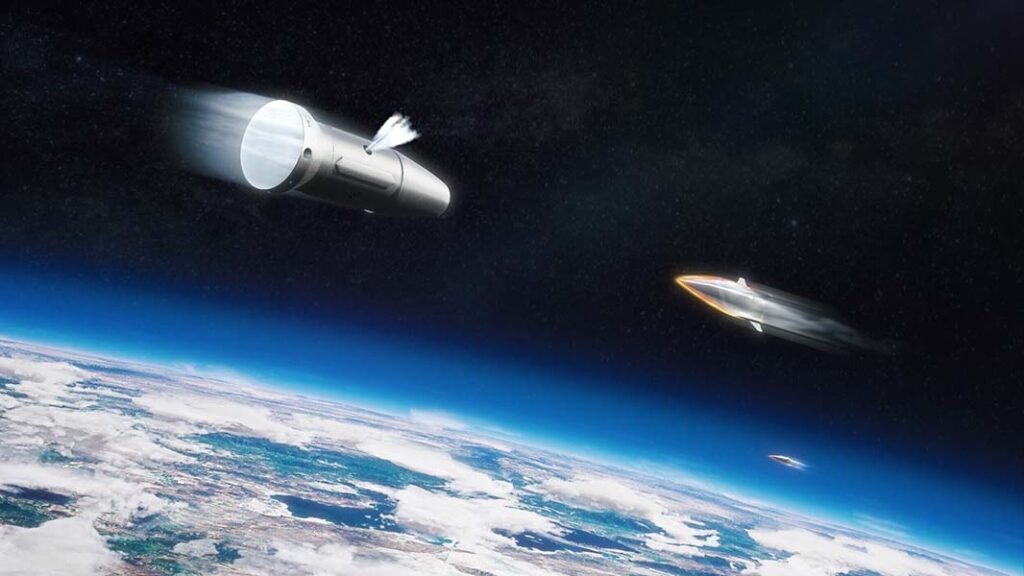
The HYDIS2 consortium consists of four core members – France, Germany, Italy and The Netherlands – and an additional ten participating or supporting nations. With MBDA as the lead contractor among 19 participating firms, the programme is currently in its three-year Concept Phase, which began in May 2024. Interim achievements as of June 2025 include down-selecting from an initial 11 interceptor concepts to six promising designs, and completing a Concept Robustness Review. The Initial Concept Review is scheduled for October 2025. It will downselect the top two designs for further development. The HYDIS programme’s goal is to mature critical technologies and finalise a design by 2030, with an in-service target date of 2035.
Israel
In 2023, Rafael Advanced Defense Systems announced it was developing the SkySonic interceptor, with special attention to the European market. According to the firm’s website, Rafael’s SkySonic interceptor is designed to match the manoeuvrability and speed of hypersonic weapons flying at Mach 5 to Mach 10. The weapon utilises a two-stage design, comprising a solid-fuel booster and the rocket-powered kill vehicle.
SkySonic is intended to confront the complete spectrum of hypersonic threats, neutralising ballistic missiles, HCMs and HGVs. The interceptor system works with current tactical radars for initial target acquisition. Subsequently, the on-board synchronised sensor system identifies incoming threats, permitting the guidance system to predict the threat’s trajectory and calculate an intercept course even against projectiles following unpredictable flight paths. The interceptor assumes a non-ballistic flight path, relying on manoeuvrability to quickly adjust to changes in the target’s trajectory. Target destruction can be achieved either through direct impact or by proximity detonation of the interceptor’s warhead.

The system appears to still be in development. To date, Rafael has not revealed many technical details or precise performance data such as operating altitude and range, nor have they announced any information regarding flight or intercept testing. The firm has published an animated video showing the missile being launched in the field from a transporter-erector launcher, which appeared to be based on a MAN HX81 10×10 vehicle. The vehicle carries a single launch tube, which is nearly as long as the vehicle, implying a missile approaching 10 m in length.
Japan
Japan is taking an alternative approach to hypersonic defence. The Japanese MoD’s Acquisition, Technology and Logistics Agency (ALTA) is developing and testing an electromagnetic railgun (EMRG) to be used aboard Japanese Maritime Self Defense Force (JMSDF) destroyers for air and missile defence, including intercept of hypersonic weapons. HCMs are considered the primary target set. The current programme was initiated in 2016. In 2023, a prototype was installed aboard the JMSDF’s test vessel JS Asuka for evaluation at sea. In October 2023, the ship fired the worldwide first EMRG shots at sea. Testing continues, with ALTA publishing photos of an upgraded ship-mounted prototype in April 2025.

The current demonstrator weighs approximately 8 tonnes and has a 6 m barrel. It fires 40 mm steel projectiles weighing 320 g and consumes circa 5 MJ of energy per shot, achieving muzzle velocities circa Mach 6.5 in testing. Press reports indicate that the prototype has so far achieved sustained firing of 120 rounds without barrel degradation. Scaling the weapon up to 20 MJ, as planned by ALTA, would permit operationally significant range, projectile size and muzzle velocity suitable to the counter-hypersonic mission. Graphics published by the MoD indicate that the operational weapon might deploy various projectile types including a fragmenting or exploding round which would produce a shotgun-like projectile cloud better suited to destruction of high-speed manoeuvring targets.
Remaining challenges include development of materials capable of withstanding the heat and friction of high-intensity rates of fire, as well as improving firing cadence and projectile stability in flight. The demonstrator is powered by three 5 MJ capacitor banks housed in standard ISO containers. According to presentations by Vice Admiral Imayoshi Shinichi, ATLA’s Director General of Naval Systems, at the Combined Naval Event 2024 in Farnborough, the JMSDF plans to deploy the ERGM on the future 13DDX destroyer class. These ships are being designed with sufficient power production to support ERGMs as well as directed energy weapons (DEWs). Some Japanese press reports also discuss plans to deploy the railguns on trucks to defend infrastructure and facilities on Japan’s islands.
Trends
Research and development activities, as well as discussion of operational concepts, reflect the need for defensive technology to match or outperform the current and the anticipated future threat systems. Several focal points for future enhancement of interceptor systems are likely. These include performance enhancement for interceptor missiles and KVs through higher-performance propulsion and improved manoeuvrability through thrust vectoring and control surfaces optimised for thin-atmosphere flight; AI-driven targeting systems capable of distinguishing targets from decoys and predicting trajectories of manoeuvring targets; multi-domain sensor fusion (space, air, ground, sea) to create a unified threat picture and cooperative intercept procedures; and modular and scalable design to create ‘families’ of interceptors which can be reconfigured to optimally match threat profiles. Given the fluid and ongoing nature of threat development, hypersonic interceptor systems will be forced to also consistently adapt and improve.
Sidney E. Dean
